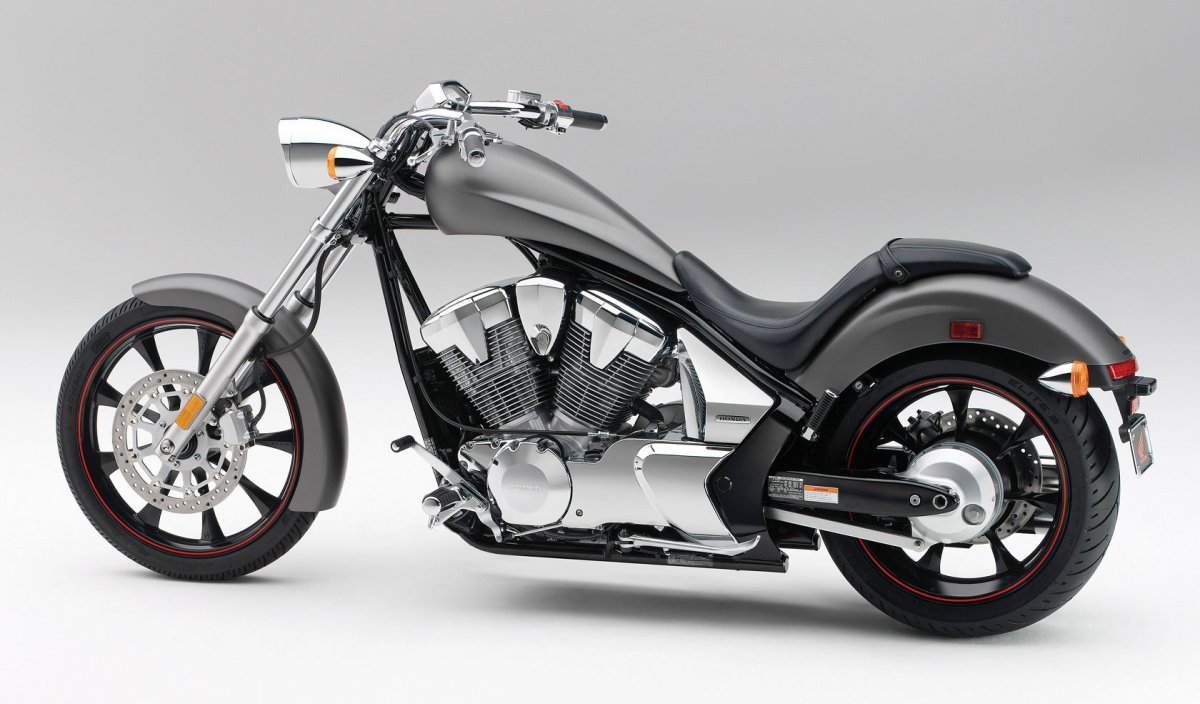Top Ten Most Effective Modifications for Car Performance
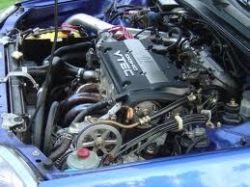
Top 10 Most Effective Performance Car Modifications
With so many car performance modifications around today, it's difficult to know which ones will give you the best results, and most bang for your buck. This article has been compiled to give you a run down of the top 10 most effective performance modifications on the market today, in comparison to the relative cost of making each modification.
Due to today's strict emissions and fuel economy standards to which manufacturers have to conform, most new cars bought these days are actually capable of performing far better than they are advertised, and sold to us. So, how can we remove these built in limitations and unleash a cars full potential? Here's a rundown of the top 10 performance enhancing modifications available to us with today's technology. Some are cheap, some are expensive. But which one gives you the most BHP per pound of your hard earned money?.
Turbocharger
Performance gain: Very High (30% to 100% / average 40%)
Installation: Difficult
Cost: Very High (between £2500 and £5000 with fitting)
A turbocharger takes pressure directly from the engine's exhaust system to power a supercharger, which forces more air into the engine resulting in greater air density in the cylinder and in turn, more power.
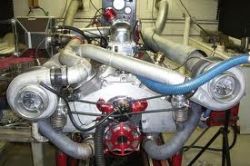
Turbocharger
One disadvantage of the turbocharger is that it causes the engine to run hotter. So If you add a turbocharger to your car, you'll need to find a way to keep the engine cool as well. Many people get around this problem by installing an intercooler. A turbocharger compresses air which is driven through the exhaust system. The compressed air gets hot which can decrease engine performance.
The installation of an intercooler works as the hot compressed air flows through the intercooler before it reaches the engine, the cooler air allows for better car performance., However installing an intercooler can be at significant extra cost.
So, if you have a relatively high budget turbochargers are an incredibly efficient and effective way to get more performance out of your engine, but be prepared to shell out some extra cash up-rating your coolant system.
Advantages: Very high power gain, efficient.
Disadvantages: Expensive and difficult to install, expect to have to up-rate cooling components.
value for money rating: 6/10
Supercharger
Performance gain: Very High (average 46%)
Installation: Difficult
Cost: Very High (between £2500 to £5000 with fitting)
A supercharger, sometimes called a blower, is similar to turbocharger insofar as it acts as an air pump, the crucial difference being a supercharger is a mechanically driven pump whereas the turbocharger uses the power of hot exhaust gases to power the pump.
Because superchargers run straight off the engine, they can increase engine load by up to 30%, meaning technically, they are less efficient than turbochargers. However, they do still have a number of advantages over the turbocharger. They are easier to fit, marginally cheaper and generally do not possess most of the negative handling characteristics of your average turbocharger, offering smoother power gains right across the rev range.
The only downside is they require a lot of space under your bonnet so if you haven't got bags of room in there, be prepared to fit a scoop to accommodate the extra components.
Advantages: Very high power gain, Smooth power gains.
Disadvantages: Not good for small engine bays, puts extra stress on the engine.
value for money rating: 6/10
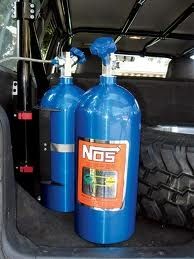
Nitrous
Nitrous
Performance gain: High (average 25-35%)
Installation: Moderate
Cost: Moderate (around £500)
Nitrous is short for nitrous oxide (N2O). In car engines, as Nitrous gas is heated up in the combustion process, it breaks down releasing additional oxygen and increases the burn rate thus allowing more fuel to enter the combustion chamber.
One side benefit of Nitrous is the cooling effect it has as it rapidly changes from a liquid to a gas. This cooling effect reduces the temperature of the air taken in by 60 degrees F (15 degrees c). Colder air carries more oxygen which is required for combustion to take place - more oxygen means you can burn more fuel.
Though nitrous can create incredible boosts to an engine's horsepower, 20bhp to over 200bhp or more depending on the size of the nozzle jets, it can also increase wear and tear on most of a cars components. In addition, Nitrous is not street legal in many areas and as a result, it is seen mainly on cars modified for racing.
The Nitrous gas itself is released into the engine via a button or switch on the cars dashboard. As the gas burns so quickly you can only expect to get a minute or so of boost per bottle of gas. For most drivers this is not a problem as the Nitrous has such a dramatic power gain, it would be almost impossible to use it for any longer than a few seconds without your car being ripped apart, or even taking off!
Advantages: Affordable, high performance gain, controllable.
Disadvantages: Short lived, bad for the environment, increase wear and tear, illegal in some places.
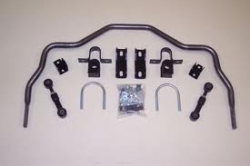
Sway Bars and Control Arms
Performance gain: N/A
Installation: Moderate
Cost: £100 to £400
So, we know it's certainly possible to improve a cars performance with out and out raw power. This is great if were driving in a straight line all the time, but that's highly unlikely, so what about handling?
A car that handles well enough to take turns at high speeds will almost always win races over cars that just have bags of raw power, but must slow down for turns.
One way to improve a cars handling is to stiffen the suspension. Sway bars and control arms are components of car suspensions that work to counteract body roll and keep the car firmly planted in turns. Adding stronger sway bars and control arms to a car stiffens the suspension, minimizing body roll and allowing it to take corners at higher speeds.
Advantages: Better handling.
Disadvantages: None.
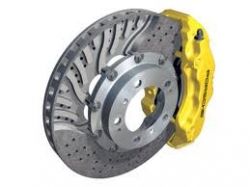
Ceramic Brakes
Ceramic Brakes
Performance gain: N/A
Installation: Moderate
Cost: Very High (around £5000)
As you increase the power of your car, it inevitably becomes harder to stop. Therefore it may become necessary to replace the stock brakes, particularly if you have drum brakes as appose disc brakes. The problem with most brakes is that they get very hot and when brakes get hot, they lose a lot of their stopping power. One way around this is to switch to ceramic disc brakes. Unlike metal disc brakes, ceramic disc brakes don't conduct heat very well. This keeps the brakes cool and stopping power strong. Otherwise you might find yourself running out of road!
The only real downside to ceramic brakes is the cost. Although you can pick up ceramic brake pads relatively cheaply, expect to spend the best part of 5 grand upgrading the discs and callipers.
Advantages: Better more reliable and consistent braking.
Disadvantages: Incredibly expensive.
value for money rating: 2/10
Spoiler
Spoiler
Performance gain: N/A
Installation: Easy to Moderate
Cost: Cheap (around £100)
As a car accelerates, it generates lift, much in the same way an aeroplane does to take off. While for the average motorist this isn't a concern, performance drivers know that lift limits the tyres contact with the road and in turn, this means less grip and wasted engine power.
The addition of a spoiler causes the air rushing overhead to push down on the car, stabilizing it and making sure more of the engine's power hits the road. And for even more grip a splitter can be added which has much the same effect but at the front of the vehicle.
Spoilers are a cost effective way of increasing grip giving you more power and control at high speeds, but are absolutely useless on non-performance vehicles.
Advantages: More grip, less wasted engine power.
Disadvantages: Look silly on vehicles that simply don't need them.
value for money rating: 9/10
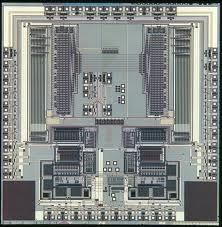
Chipping and ECU Remapping
Chipping & ECU Remapping
Performance gain: High
Installation: Easy to Moderate
Cost: Moderate to High (£250 to £1000)
Due to today's strict emissions and fuel economy standards to which manufacturers have to conform, most car engines these days are controlled and regulated by computers which in most cases, actually limit a cars performance to well below its actual capability. There are however a couple of ways you can remove this limit and unlock your cars full potential.
ECU Remapping is a process by which a cars diagnostic port is used to re-program the ECU to get the best possible performance out of your car. When an ECU is remapped, the program that deals with engine performance is basically being fine tuned. This is usually done with 2 objectives in mind. As well as re-mapping the ECU to produce greater power and torque, drivability problems at lower rev ranges such as flat spots and hesitation issues can also be smoothed out, giving the engine more initial torque making a more responsive and enjoyable drive.
Chipping is basically the same as ECU remapping but instead of re-programming the unit you're bypassing it completely. This is often less effective than remapping because every engine runs slightly differently, and mass produced pre-programmed chips don't take into account an engines subtle differences.
The only downside to ECU remapping and chipping is that a cars fuel consumption can dramatically increase. Also, over time, as the car is performing far beyond its originally asserted capability extra stress on the components means you will find they wear out far faster. You can also expect to have your vehicle serviced more often to keep it in tip top condition, sometimes as much as double the normal rate.
One way around this is having several chips or re-maps and switching between them depending on how you intend to drive. For example, you could have an economy setting for running the kids to school, a cruising setting for motorway driving and a sports setting for those weekend track days.
Advantages: Affordable, high performance gain.
Disadvantages: Increases fuel consumption, parts wear out faster, increased frequency of vehicle servicing.
value for money rating: 9/10
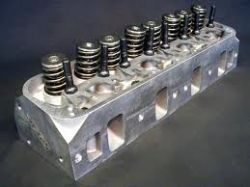
Rebore the Engine
Rebore the Engine
Performance gain: Moderate
Installation: Difficult
Cost: Cheap (from £10 per cylinder)
Reboring a car's engine to increases displacement is another, and our final way to improve its power. When an engine is rebored, each cylinder is bored out (made bigger) to give it greater capacity, and then fitted with larger pistons and connecting rods. This increases the cylinders volume, which increases the amount of air and fuel that can fit in the cylinder. More air and fuel means more powerful combustion, and in turn a higher power output for the engine.
Before you even consider a rebore, it's important to check that you can get a gasket, piston with rings and other components to match your chosen bore capacity. A rebore is irreversible and you'll certainly not want to have to do it again. Another thing to consider is that after reboring your engine, it will be necessary to run the engine in again. This process of bedding in could take up to 9000 miles. That's a whole 9000 miles of sensible driving!
If a rebore sounds too scary for you, another option is to use a stroker kit. A stroker kit changes the length of the crank which, when combined with a lower profile piston, increases the capacity of the cylinder.
Advantages: Cheap, good power gain.
Disadvantages: Requires bedding in, not straight forward, irreversible.
value for money rating: 9/10
Conclusion
Although there are clearly many ways to get better performance out of your car, all with various pros and cons, what gives you most bang for your buck? Well, we think if you're not too worried about servicing your car more regularly, it could be time to get an ECM remap. Affordable, flexible and completely reversible, we think it's the clear winner.
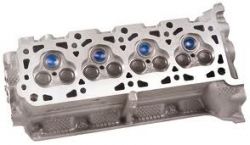
Cylinder Heads
Cylinder Heads
Performance gain: High
Installation: Moderate
Cost: Moderate to High (£500 to £1500)
The majority of modern production engines have only two valves per cylinder, an intake valve to let air in, and an exhaust valve to let exhaust gasses out. A good way to get more power out of your car is to upgrade your cylinder heads to a set that has four valves per cylinder. The additional intake valve allows more air to enter the cylinder, resulting in stronger combustion, while the extra exhaust valve clears out the engine's waste faster.
Advantages: More power, reverse-able.
Disadvantages: None.
value for money rating: 7/10
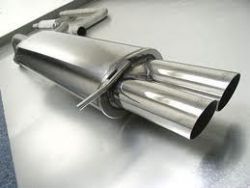
Exhaust
Exhaust
Performance gain: Small
Installation: Easy to Moderate
Cost: Cheap to Moderate (£50 to £500)
As we already know, a good way to get more power out of your car is to let more air into the engine which results in stronger combustion. An often-overlooked way to improve performance is to help the exhaust gasses get out of the engine.
The exhaust is an engine's way of exhaling. If it's difficult to exhale, the engine can't work as hard. As most performance modifications are designed to force more air and fuel into the engines cylinders, it becomes important to ensure the engine has the ability to expel the gasses efficiently.
Upgrading a car's exhaust system with headers, wider exhaust pipes and free-flowing mufflers will make it far easier for the engine to expel its waste and therefore increases performance.
Advantages: Affordable, makes the most of other performance modifications.
Disadvantages: None.
value for money rating: 7/10



